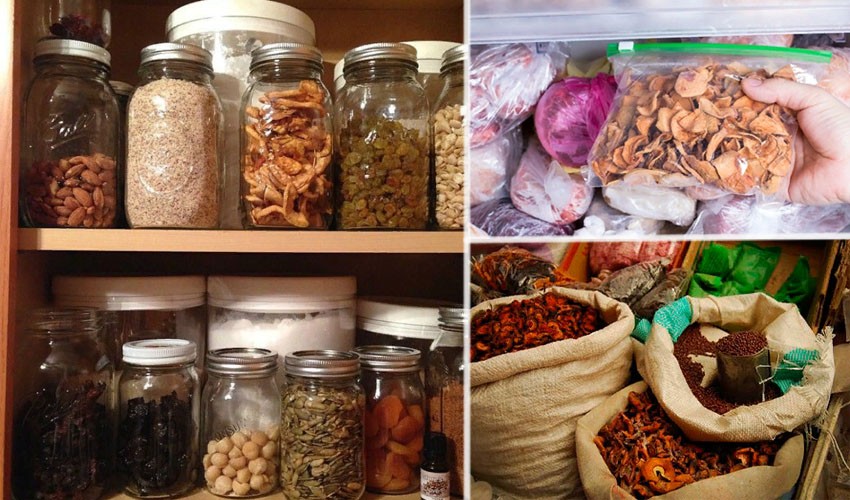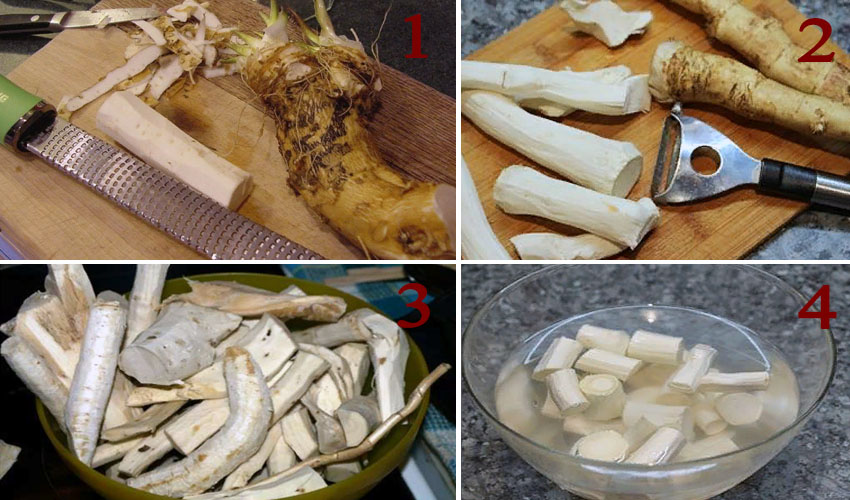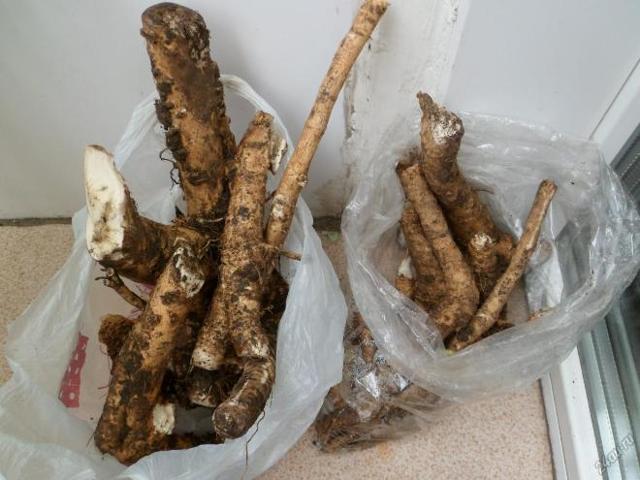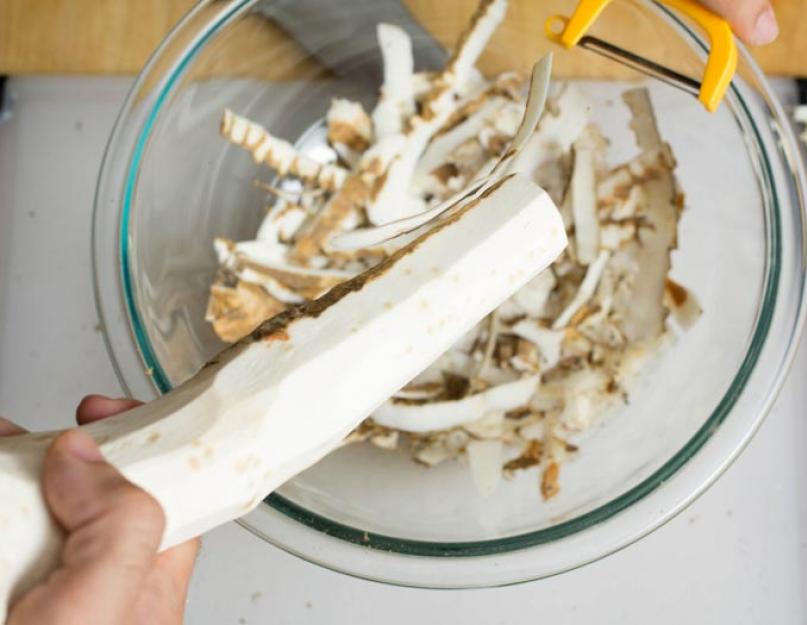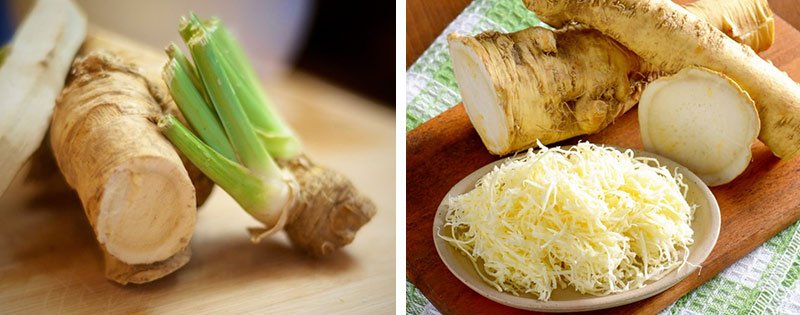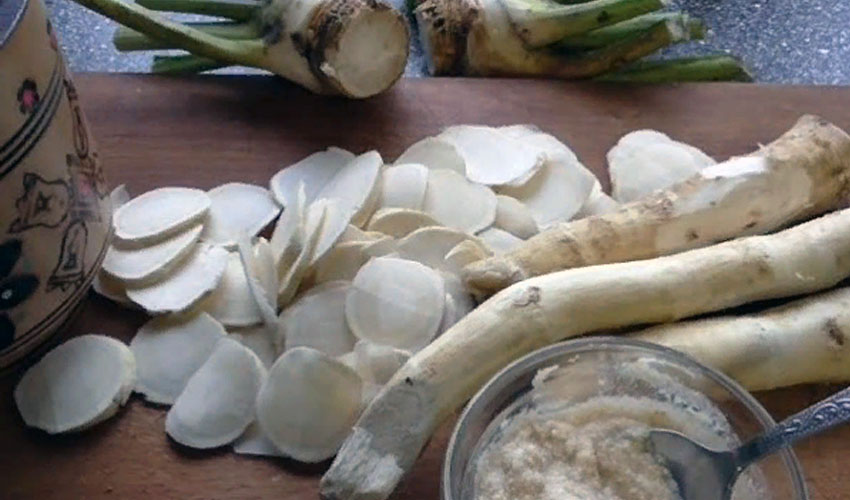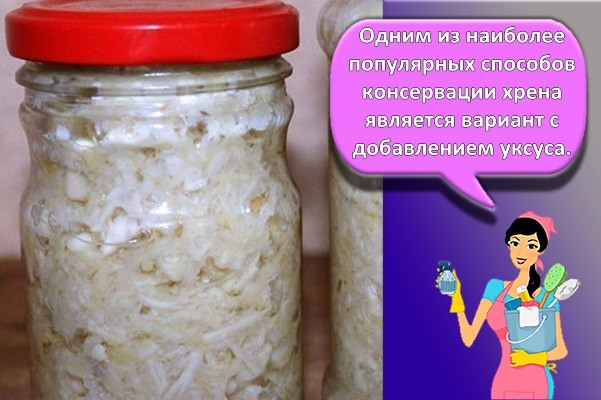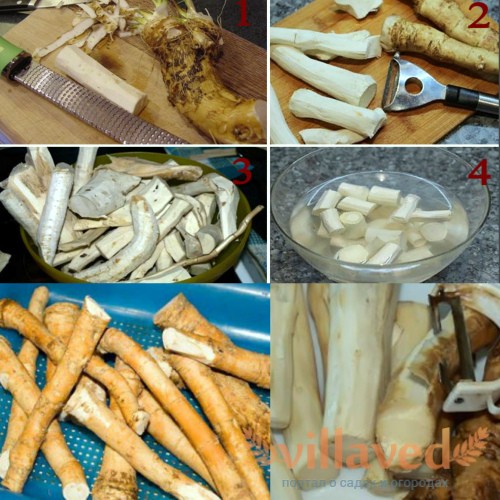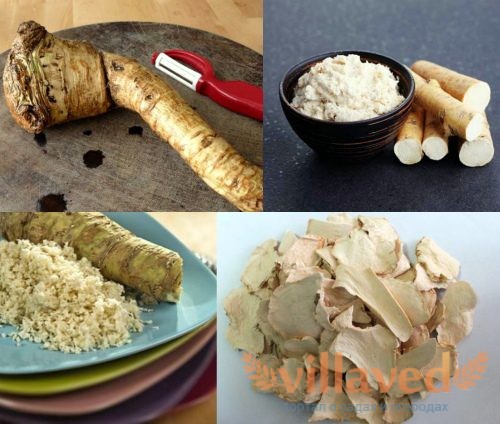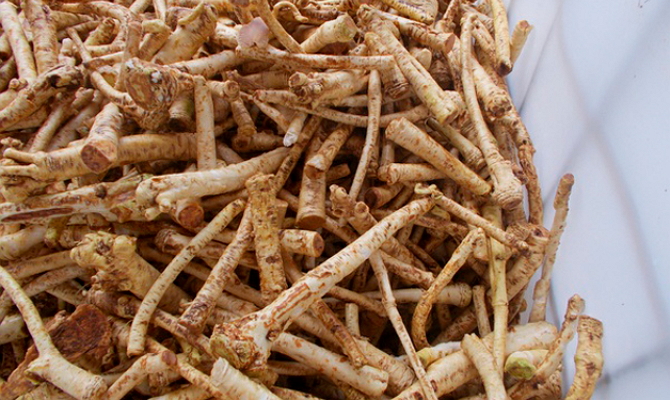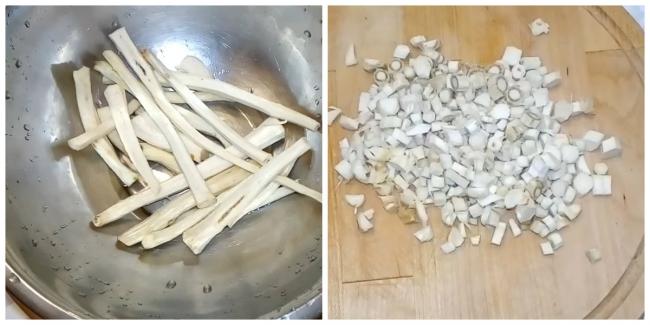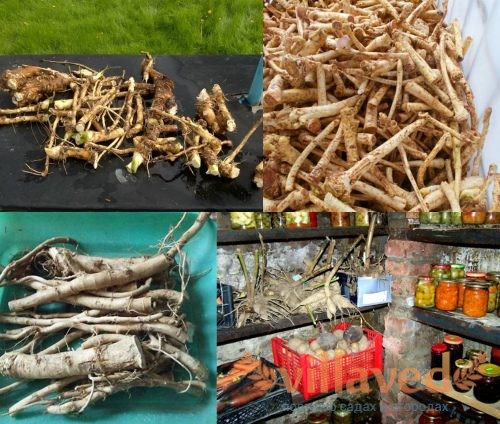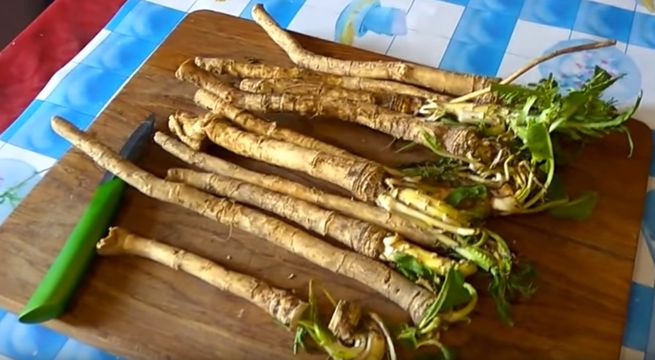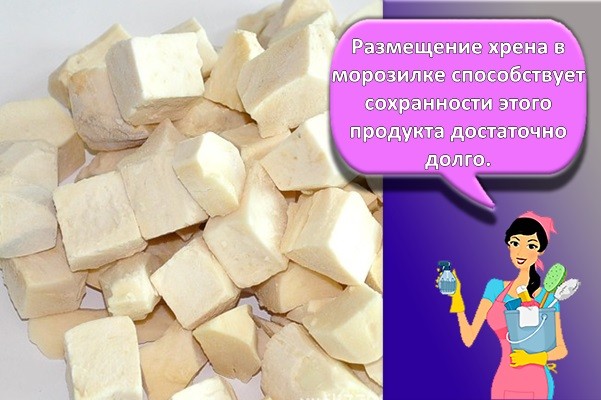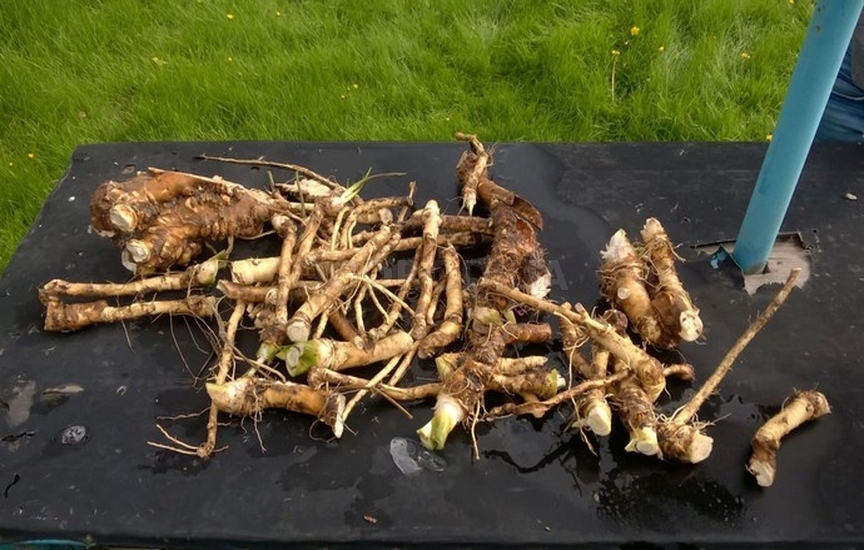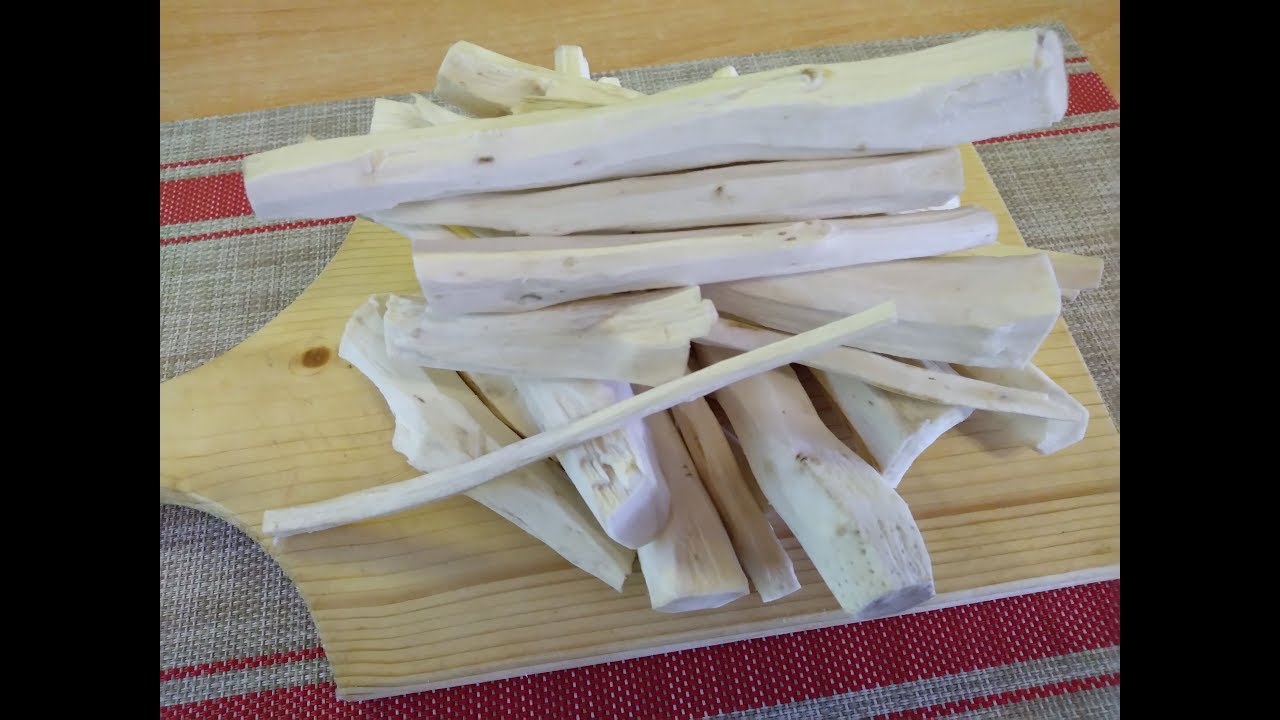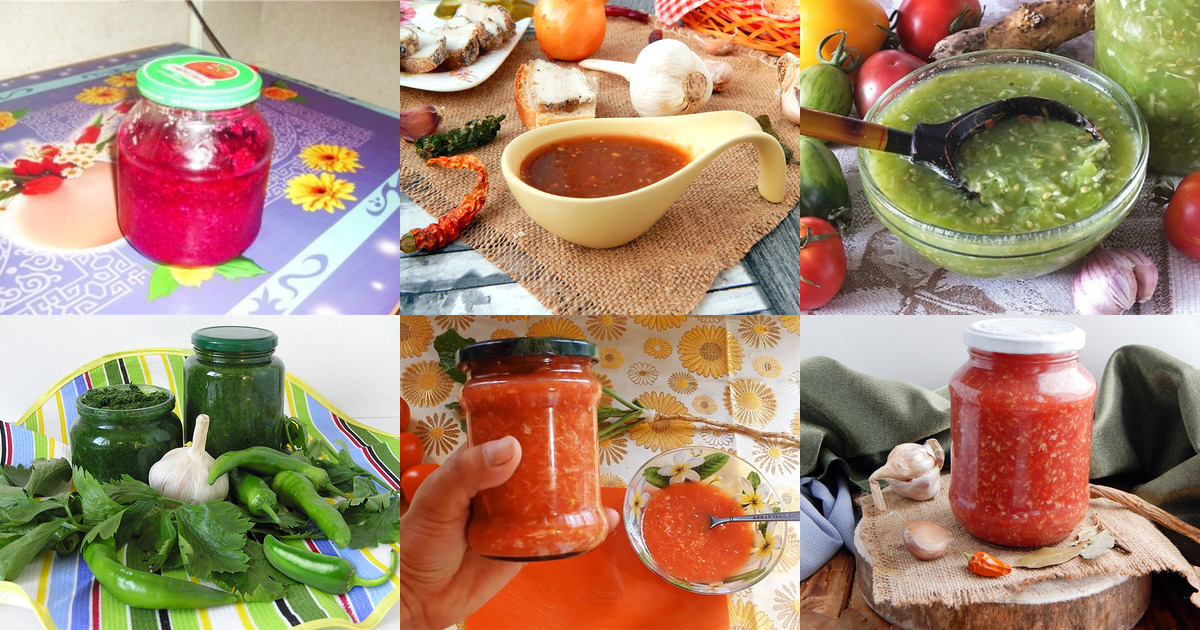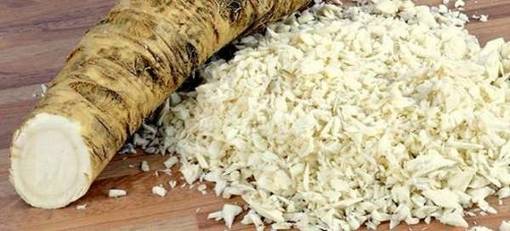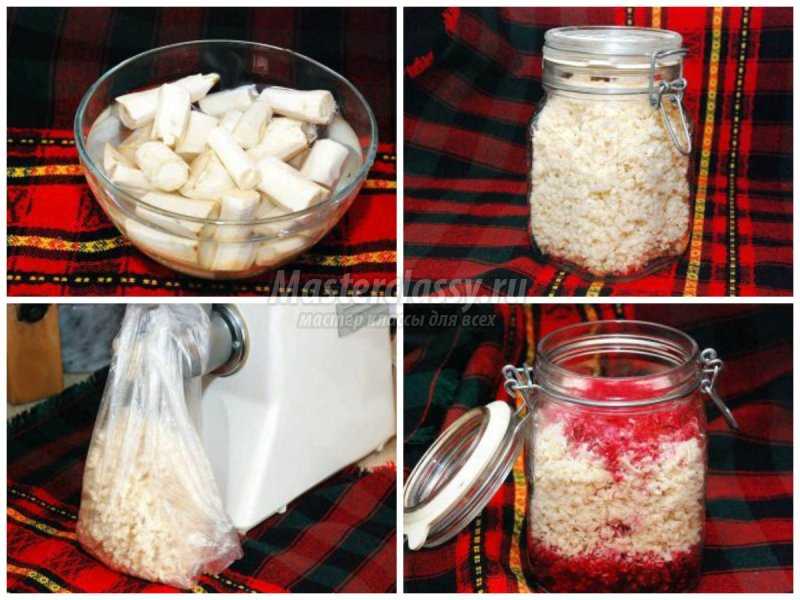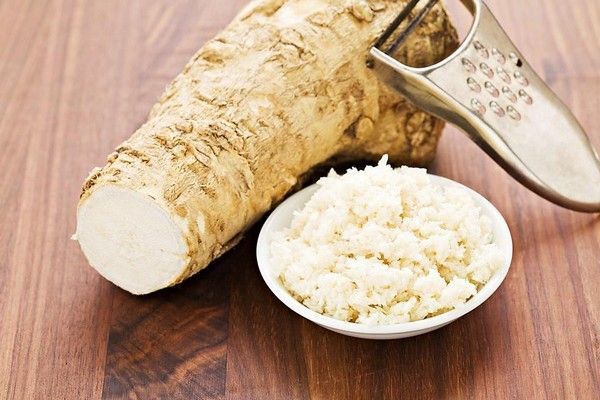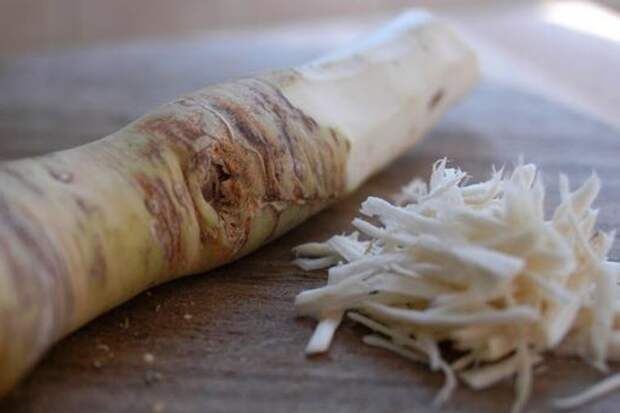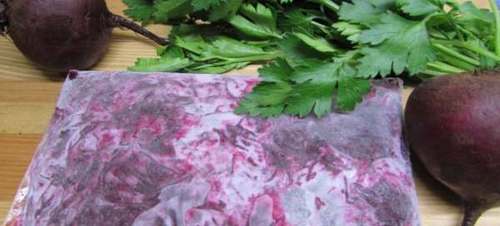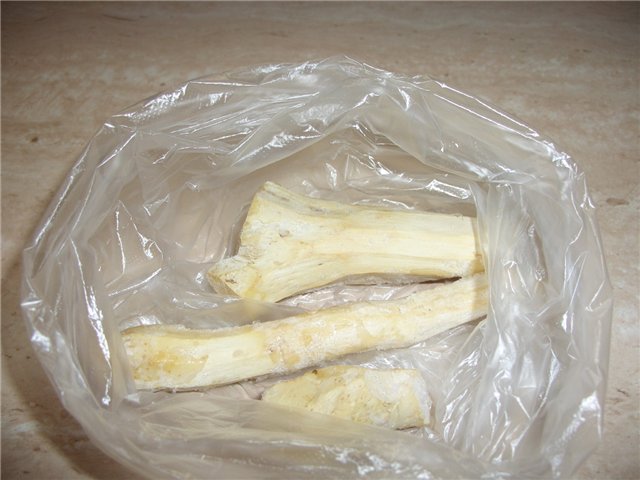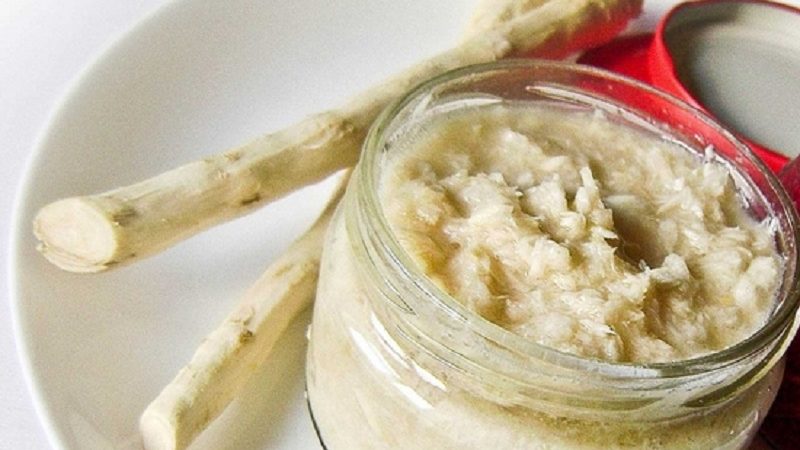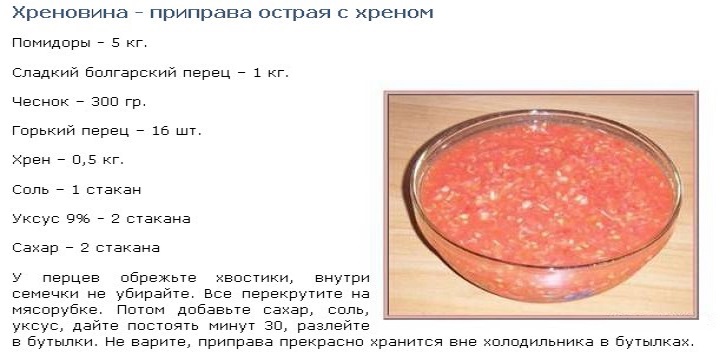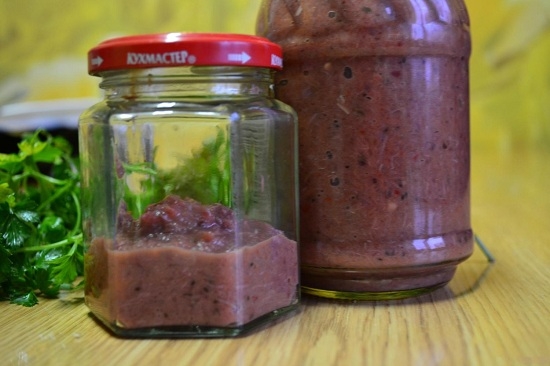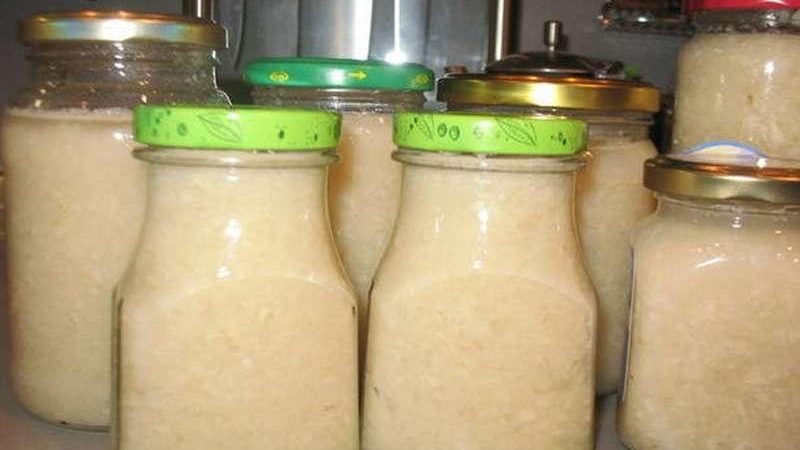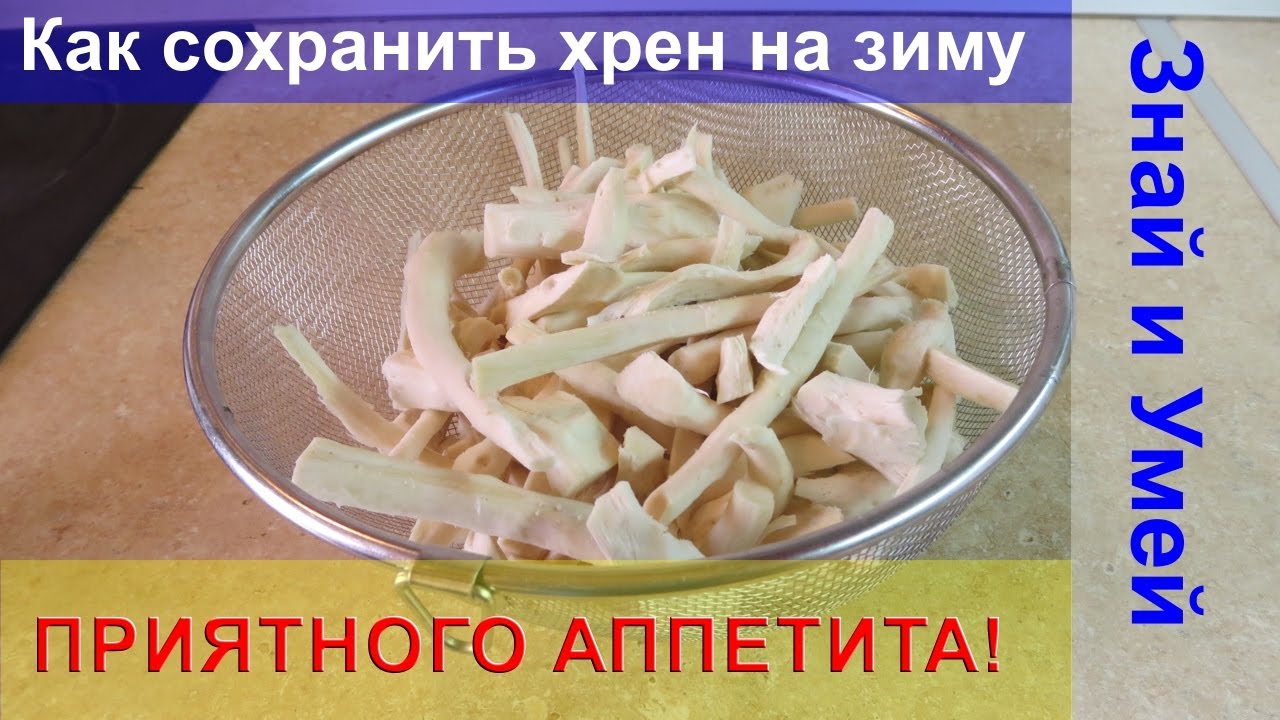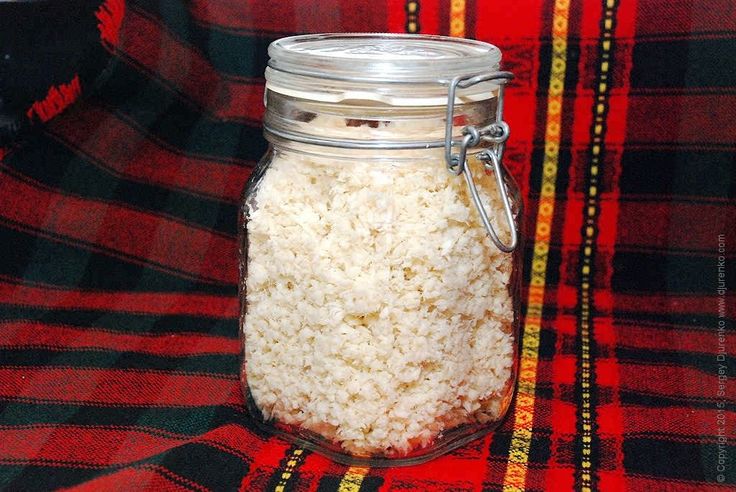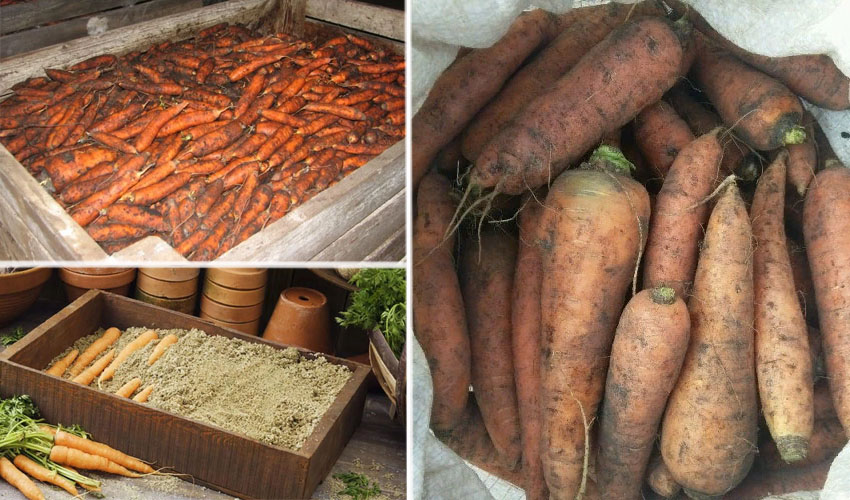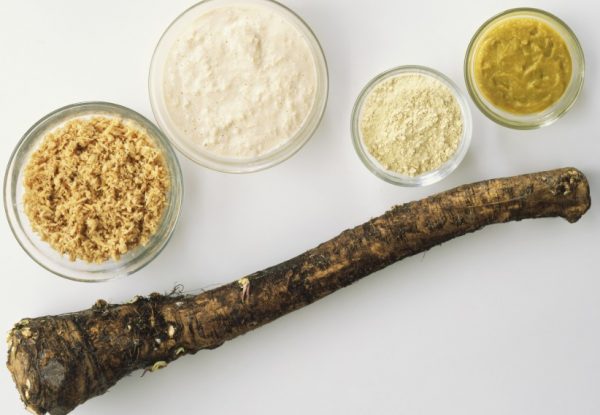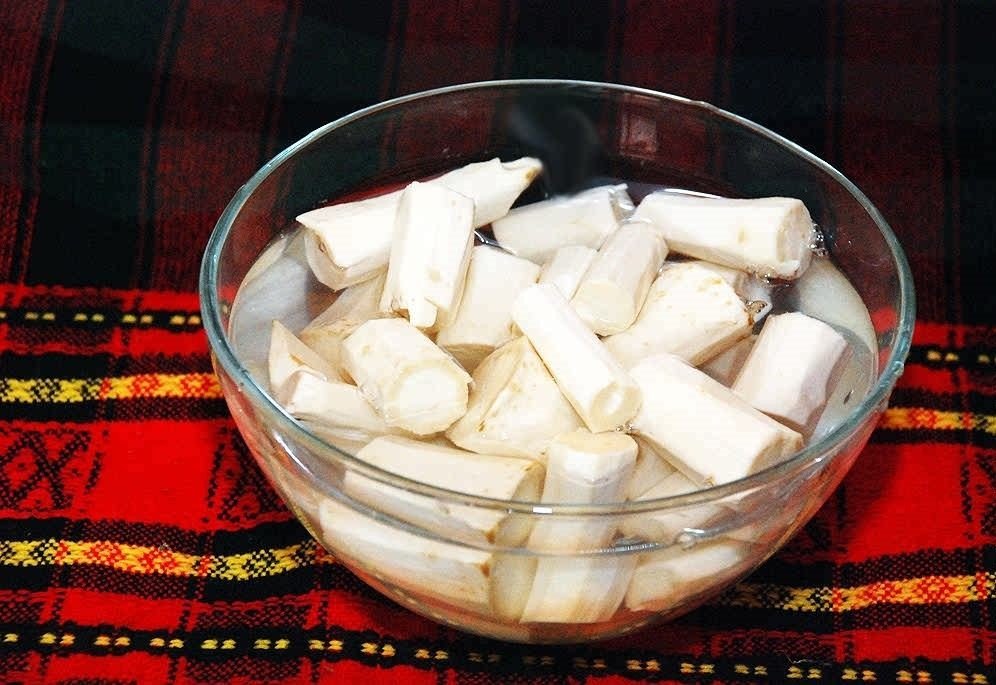Storage methods and locations
Owners of their own homes store horseradish in the cellar or basement. The apartment uses a dark cool pantry or refrigerator. Depending on the storage location, the method of processing the root crop is chosen.
Basement or cellar
In order for the roots to “survive” the winter well and not lose their spice and taste, several rules must be followed:
- Horseradish is dried, cleaned of the remnants of the earth, laid out in wooden boxes in one layer so that there is a distance between the roots. Fall asleep with sand a few centimeters. The sand is periodically sprayed with water. Thanks to this, the root vegetable will retain its taste and aroma.
- Storing horseradish at home for the winter is possible in plastic bags. To do this, the roots are washed in water, dried thoroughly, folded into plastic bags or bags and filled with air so that the container becomes airtight. With this method of storage, the roots can lie from 3 to 6 months.
- Root crops will stay fresh for a long time with the help of peat bedding. For this, the prepared horseradish is put in boxes and covered with peat. It prevents the roots from rotting, as it has an antibacterial effect.
Refrigerator and freezer
To keep stocks of horseradish in the apartment, they use a refrigerator. For this:
- The roots are thoroughly washed and dried, wrapped in cling film or thick paper, made several holes for air circulation and placed on the bottom shelf of the refrigerator. In this way, the harvest will last from 4 to 5 weeks.
- For longer storage, choose an airtight container. Then the shelf life of the workpiece will increase to 3 months.
 This method of stockpiling is chosen with a small harvest, because containers take up a lot of space on the shelves of the refrigerator.
This method of stockpiling is chosen with a small harvest, because containers take up a lot of space on the shelves of the refrigerator.
A great way to save horseradish for the winter is to freeze it. The roots are washed and dried, cut into circles or cubes. Fold in a convenient container or bag and put it in the freezer. Thus, the root crop can be stored for about a year.
Drying the roots
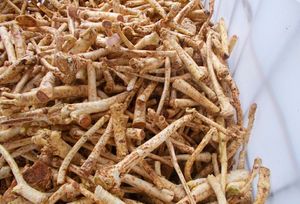 This is a great way to harvest the roots of a plant if it is used to prepare various culinary masterpieces. Rejected roots are used for drying. Horseradish is peeled, cut into plates. The plates are laid out in one layer on a sheet and dried in the oven at a temperature of 60 degrees for 1.5-2 hours. Dried horseradish is ground in a coffee grinder and the powder is poured into a spice jar. In this form, horseradish can be stored for about 2 years, but it will not lose its taste.
This is a great way to harvest the roots of a plant if it is used to prepare various culinary masterpieces. Rejected roots are used for drying. Horseradish is peeled, cut into plates. The plates are laid out in one layer on a sheet and dried in the oven at a temperature of 60 degrees for 1.5-2 hours. Dried horseradish is ground in a coffee grinder and the powder is poured into a spice jar. In this form, horseradish can be stored for about 2 years, but it will not lose its taste.
Horseradish pickling
For this workpiece, the washed and peeled roots are crushed. You can grind horseradish at home using a grater, meat grinder or food processor. When grinded, the roots release caustic substances that irritate the nasal mucosa and eyes. Therefore, when using a meat grinder, a plastic bag is put on the outlet.
The grated root is laid out in clean sterilized jars and poured with marinade. For the marinade you will need:
- 1 cup boiling water;
- 1 tbsp. a spoonful of salt;
- 1 tbsp. a spoonful of sugar;
- 125 ml vinegar.
Banks are closed with lids. Most often, small jars are used to quickly use the product. If the jar is left for a long time in the open air, the specific taste of the roots will disappear. The shelf life of such conservation is 2-3 years.
The most useful properties of the roots of the plant are preserved only the first day after its preparation. The benefits and pungency will diminish over time.
How to store horseradish in the refrigerator
Residents of cities can use an ordinary refrigerator to store roots, because it maintains a stable temperature and humidity, which prevents spoilage of the vegetable (Figure 4).
After harvesting, you need to carefully examine all the roots, since only vegetables should be placed in the refrigerator without rot and signs of mechanical damage. Next, the vegetable needs to be slightly dried and cleaned from the remnants of the earth, but not washed. After that, the roots are wrapped one by one in cling film and several holes are made in it for air circulation. In the future, the crop prepared in this way can be stored in the lower drawer of the refrigerator.
 Figure 4. Preparing roots for storage in the refrigerator
Figure 4. Preparing roots for storage in the refrigerator
As a rule, with proper preparation, the roots are stored in the vegetable section of the refrigerator for up to three months. But, if you want to keep the vegetable fresh for a longer time, it is better to use the freezer. To do this, the roots are cleaned, washed under running water and dried. Next, they need to be cut into small cubes, folded into containers or special bags for freezing, and sent to the freezer. In this case, the duration of storage of the vegetable will be about six months. However, it should be borne in mind that after defrosting, horseradish will lose its sharpness.
Storing a whole root
Despite the fact that many tasty and healthy blanks can be prepared from horseradish, it will be more logical and correct to store the entire roots.
To do this, you can use one of the following methods:
- Basement or cellar: The easiest way to store a vegetable is in boxes of clean sand. First, the bottom of the container is sprinkled with sand, and then the roots are laid out in it, trying to place them so that the roots do not touch. Each layer is sprinkled with a small layer of sand. In addition, horseradish can be stored with carrots. With such a neighborhood, both vegetables will not rot and lose moisture.
- On the balcony: In an urban setting, the easiest way to keep the root fresh is on a glazed balcony. The principle remains the same as when placed in the basement, that is, the roots should be placed in boxes of sand.
- In the refrigerator: for a long shelf life (about 3 months), it is better to rinse the roots, clean them, put them in sealed bags and put them in the lower compartment of the refrigerator. If you haven't peeled the vegetable, the shelf life is only 4 weeks.
With a wide variety of ways to store whole horseradish, many housewives still prefer to grind it for freezing or preparing hot snacks for the winter.
Selection and sorting of raw materials
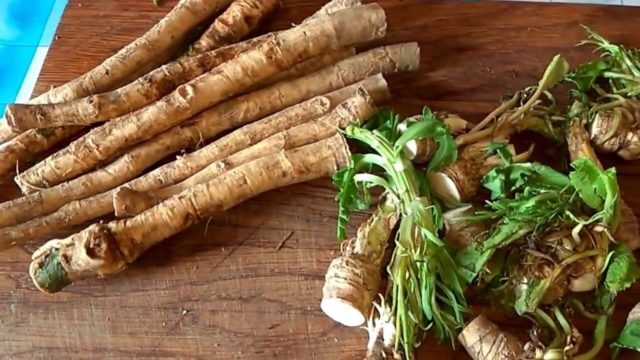 Digging horseradish from the autumn harvest, as well as going to the market for a stock, should be in mid-October or early November. Root crops harvested after this period lose their juiciness. As a result, not only the taste of the product suffers, but also its keeping quality, such fruits dry out faster during storage. When purchasing horseradish, you should ask the seller to allow one root to be broken - if it is brittle, it means that the root crop has been overexposed in the ground.
Digging horseradish from the autumn harvest, as well as going to the market for a stock, should be in mid-October or early November. Root crops harvested after this period lose their juiciness. As a result, not only the taste of the product suffers, but also its keeping quality, such fruits dry out faster during storage. When purchasing horseradish, you should ask the seller to allow one root to be broken - if it is brittle, it means that the root crop has been overexposed in the ground.
For culinary purposes, the roots of three-year-old plants are best suited: young horseradish does not have the required "pungency", and old fruits become tasteless and acquire an excessively fibrous, "wooden" structure. The root of the correct age is about 2 cm in diameter.
Remove horseradish from the ground carefully so as not to prune. Places of cuts will open the entrance to the fetal tissue for fungi, which is fraught with rapid deterioration of the product.
For long-term storage fresh, only healthy, succulent roots that are not affected by pests or diseases should be left. The pulp of the root crop should have a uniform white color, and the skin should have an even and light yellowish tint. There should be no traces of impacts, cracks, signs of decay or mechanical damage on the surface of the fruit.
Storage errors
Horseradish storage has several nuances, ignorance of which can spoil the stock. The most common mistakes:
- Drying in the sun. Horseradish should not be kept in direct sunlight even for a short time, moreover, it is not recommended to dry the raw material in this way.It is necessary to dry the horseradish after digging in the fresh air in the shade or indoors.
- Waterlogging the storage sand. If the sand in the box is wet, the root vegetable will quickly rot. The sand should be slightly damp, crumbling if squeezed in handfuls.
- Freezing large portions. The frozen product retains its taste well, but it should be defrosted once. This applies to both fresh roots and horseradish sauce. Therefore, you need to freeze in small portions in order to consume the contents of the bag at a time.
- Blotting the root before drying. Drying involves washing the roots of horseradish, but you need to wash it as soon as possible so that the fibers of the fruit do not absorb excess moisture, otherwise the raw material will become moldy.
- Damping the powder. Dry horseradish, like other spices, must be kept at a moisture content of no higher than 75%. Dampness is fraught with the appearance of mold and deterioration of the product.
Each horseradish storage method has drawbacks, but their variety allows you to choose the most convenient option. Horseradish is harvested twice - in autumn and spring, so even a small stock that the freezer holds will be enough to provide the table with a healthy and tasty addition to the main diet until fresh root crops appear in the markets or their own beds.
Fresh storage
 You can store the root crop without processing for up to 1.5 years, but only the first 4-5 months horseradish will have all the taste qualities of a fresh product. Raw materials that have been stored longer than this period lose their pungency and some of the nutrients.
You can store the root crop without processing for up to 1.5 years, but only the first 4-5 months horseradish will have all the taste qualities of a fresh product. Raw materials that have been stored longer than this period lose their pungency and some of the nutrients.
The horseradish crop should be removed to a permanent storage location as soon as possible, since it is harmful for vegetables to be in dry, open air. It is optimal to dry the root crop for a day at room temperature, and then send it to storage. Do not drop or hit the fruit, leave it in direct sunlight. You should also not wash the root crops; just shake off the remaining soil from them. The leaves should be cut off immediately after digging and the “wounds” should be treated with iodine.
Room requirement
You can keep horseradish fresh for a long time in a cold and dark room with high humidity. As a rule, a cellar or basement is used. A glazed balcony, poorly illuminated by the sun, is also suitable, but with the arrival of frost, one must not forget to wrap up the stock.
Optimal conditions:
- Temperature in the range from 0 to + 2 ° C. The maximum permissible value is + 5 ° C, at high temperatures the shelf life of the product is reduced to one month.
- Air humidity - 85-90%. In dry air, the horseradish root dries up; at higher rates, decay of the raw material is likely.
- Darkness. Under the influence of sunlight, the root loses most of its nutrients, first of all, phytoncides volatilize.
The room for storing horseradish must be clean and disinfected. A quick and reliable way to remove fungi and pest larvae is to fumigate with sulfur, but the procedure can only be carried out in storage facilities remote from living quarters (not in a closet or on the balcony of a city apartment). It is necessary to burn sulfur with closed doors at the rate of 1 kg of substance for every 1 m3 of the room. After fumigation, the cellar or basement must be thoroughly ventilated; vegetables can be placed in storage after 2 weeks.
Storage methods
 Fresh horseradish without processing can be saved in several ways:
Fresh horseradish without processing can be saved in several ways:
In sand. As a container for storing horseradish, you will need wooden boxes, the bottom of which should be covered by 8 cm with clean and wet sand. On top of the sand, horseradish roots should be placed in one layer. Root crops must be laid so that they do not come into contact with each other, this will reduce the risk of decay. It is advisable to maintain a distance of 3-5 cm between the vegetables. The horseradish should be sprinkled with wet sand with a layer of 4 cm. If the height of the box allows, you can store several levels of root vegetables in it.
In buckets. Horseradish roots must be stuck vertically into the moistened sand in a bucket or other container, keeping a distance between them.This method is not practical in case of storing large stocks. In bundles. Horseradish can be kept in bunches of 2-3 roots, hanging them from the ceiling. The method is not the most successful, since the root crop does not have the protection that sand gives from excessive moisture or dryness in storage. In fridge. The method limits the amount of stock, the freshness of the root crop can be preserved no more than 3-4 weeks. The preparation is somewhat different: the fruit must be thoroughly rinsed under running water and dried for 2 days at room temperature. After that, the roots are placed in a plastic bag. It is advisable to wrap each root vegetable separately from the others.
It is important to ensure that the packaging is sealed, so cling film is the best option. Keep the stock on the bottom shelf of the refrigerator
The safety of horseradish is not affected by the proximity to other vegetables.
The horseradish stock should be checked periodically. In case of decay of part of the root crops, the affected fruits should be disposed of, the rest should be treated with antifungal drugs. If the cellar is dry, you need to moisten the sand in a box or bucket with water from a spray bottle every month. The same measure can be used if the crop has begun to dry out.
Horseradish storage in winter: features
If you do not want to take up space in the refrigerator or you do not have time to dry or freeze horseradish, you can always keep it fresh in the basement, especially since this method is considered the simplest and most effective.
Despite the fact that horseradish belongs to unpretentious crops, both in terms of cultivation and storage, this does not mean at all that when laying in the basement, one should not adhere to certain recommendations. Next, we will consider the main nuances that must be taken into account when storing in a basement or cellar.
Horseradish preparation
In order for horseradish to be successfully stored all winter, first of all, it must be properly collected. The collection can be carried out in spring or autumn, depending on the cultivated variety. But, since many summer residents have this vegetable growing in the garden by itself, it is better to collect it all the same in the fall.
Rhizomes are carefully removed from the soil, taking care not to damage their surface. After that, you need to lightly shake off the excess soil from the vegetable. It is not recommended to rinse the vegetable that will be stored in the cellar, since in such rooms the vegetable is much better stored in a natural earthen coma (Figure 2).
 Figure 2. Harvesting and preparing the crop for storage
Figure 2. Harvesting and preparing the crop for storage
When the crop is harvested, you need to remove the remaining leaves and treat the sections with iodine so that fungi or pathogenic microorganisms do not penetrate into the root. After that, the vegetable is dried in a warm, well-ventilated room for 24 hours. Next, the roots need to be sorted: only high-quality roots are suitable for storage in the basement, without signs of mechanical damage and rot. It is better to send the affected specimens for processing immediately.
Cellar storage
Despite the fact that there are many modern storage methods, the most effective options are still considered to be the laying of roots in the basement or cellar (Figure 3).
To successfully preserve the root in the basement throughout the winter, you need not only to properly prepare the crop, but also to take care of the arrangement of the room in advance. First, you need to carry out a thorough cleaning in the basement: remove all plant residues, whitewash the walls and ceiling with slaked lime and disinfect boxes, racks and shelves. An effective method of disinfecting the cellar is considered to be processing with a smoke bomb, but it should be borne in mind that after such processing, any vegetables, fruits, roots or blanks cannot be stored for two weeks.
If you have already prepared the basement, you can proceed to the direct laying of the vegetable:
- Prepare in advance the required number of wooden boxes in which the roots will be located.
- At the bottom of the containers, you need to pour a layer of earth, sawdust or dry sand, and then put the roots in one layer so that they do not come into contact with each other.
- Next, we continue to lay the vegetable in layers, sprinkling each with sawdust or sand.
If you are storing a root dug in the spring, it is advisable to sprinkle it with slaked lime. This is necessary so that the roots do not start to release young growth.
During storage, the vegetable must be periodically inspected. Any damaged or rotten specimens must be removed immediately, as they can damage the rest of the crop. If you notice that the roots have become too dry, just add a little damp sand to the box so that moisture does not start to leave the vegetable and it does not become flabby.
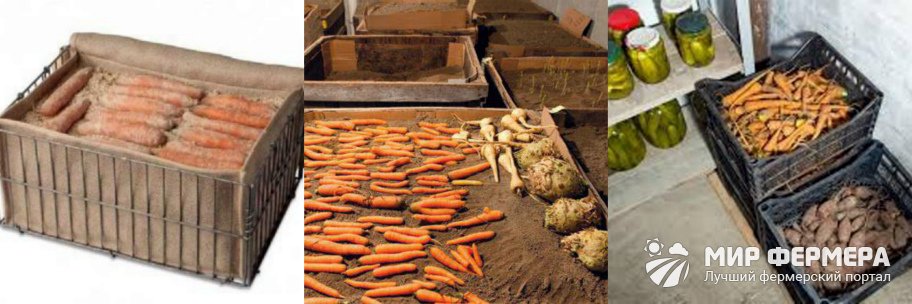 Figure 3. Options for storing whole roots in the cellar
Figure 3. Options for storing whole roots in the cellar
There is another way to store the root in a basement or cellar without using a sandbox. To do this, dried and unpeeled roots must be tied into small bunches, and then hung from the basement ceiling. Unfortunately, with this method of storage, the roots quickly lose moisture and dry out, but if you plan to leave a small amount of this vegetable for the winter, this method will be quite acceptable, especially since it saves space in the basement.
How to store in a cellar, basement
The best way to preserve the freshness, benefits and hotness of aromatic roots is to lay them in the cellar, basement. The storage should be pre-prepared by disinfecting the shelves and walls with a solution of bleach, copper sulphate or a sulfur stick.
Optimal storage conditions in the cellar:
- humidity 85-90%;
- good ventilation;
- temperature background 0-2 ° C.
Wooden boxes and clean wet sand, perlite or vermiculite are suitable for storing horseradish in the cellar (see "5 reasons to use perlite and vermiculite for winter storage of vegetables, fruits, rhizomes, tubers and bulbs"):
- Pour a layer of filler on the bottom of the container.
- Form the next layer from selected unwashed roots, which need to be laid out at some distance from each other.
- Fill the box in layers so that the filler is on top.
The roots will remain fresh for 10-12 months, only periodically inspect to remove spoiled specimens and moisten the substrate with a spray bottle once a week.
If the box is not found, you can similarly form a pyramid right on the cellar floor. Also, an alternative to the boxes will be a bucket filled with garden soil. The soil should be slightly moistened and the roots should be buried at a distance from each other. The storage technology is identical.
Place the fragrant roots in the same drawer with the carrots. Phytoncides will protect carrots from damage.
Tips for cleaning and chopping roots
My dear readers, many people think that it is not necessary to peel off the top layer to a white pulp. It is advisable to do this so that later you can simply get a clean product and use it for its intended purpose. You can remove the thin skin with a knife, a metal brush, or use a mini car wash.
Cleaning with a knife
I wash the root crop under running water with a kitchen sponge. Then I clean off the top layer with a sharp knife, the waste flies off like small shavings.
Cleaning the roots with a steel wool
It is convenient not only to clean the dishes with a metal washcloth, but also to peel off the thin skin of the roots. To do this, I use a harder brush, which then I do not mind throwing into the trash can. To make it easier to clean, I soak the horseradish root in water for a couple of hours. Then I take it out and remove the top layer with a washcloth.
The simplest method for cleaning horseradish
Dear housewives, you can use a mini car wash. Place the roots in the net; pressurized water from the device will wash away not only the remaining dirt, but also remove the thin skin like shavings.
Watch the video on how to properly wash horseradish:
h2> Ways to prepare canned horseradish for winter storage
There are many ways to preserve, but the simplest recipes: horseradish with vinegar, citric acid, vegetable oil and honey. You can cook horseradish or adjika. Here's a classic recipe for you.
Horseradish with vinegar
- take 500 g of peeled roots and grate or chop with a meat grinder;
- Pour 400 ml of water into a bowl, add 3 tbsp. l. vinegar (9%), 2 tsp. salt and 3 tsp. Sahara;
- Put the grated root vegetable in a bowl and stir, place in convenient glass jars and close tightly with a lid.
Author's note
Natalia Papanova
Blog author
Store horseradish and vinegar in the refrigerator for no more than a month.
With citric acid
Take the same amount of ingredients as in the previous recipe. Just replace vinegar with citric acid at the rate of: 1 tsp. at 14 st. l. water.
With honey
You can cook horseradish in a different way, replacing sugar with honey. This remedy helps fight angina, fever and cough.
If you don't want to be treated with evil horseradish, try growing lemon balm in a pot to make a healing and aromatic tea.
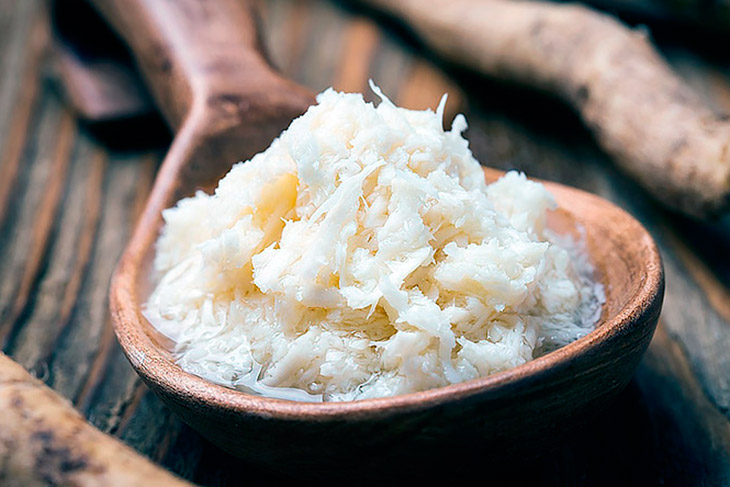 It remains only to add honey and the medicine is ready
It remains only to add honey and the medicine is ready
With sunflower oil
You can use vegetable oil as a preservative by adding it before closing the horseradish jar with the lid.
Where to store horseradish in banks
There are many recipes for horseradish processing that allow you to fully use it. Salting and pickling will take time, but the nutrients will last longer.
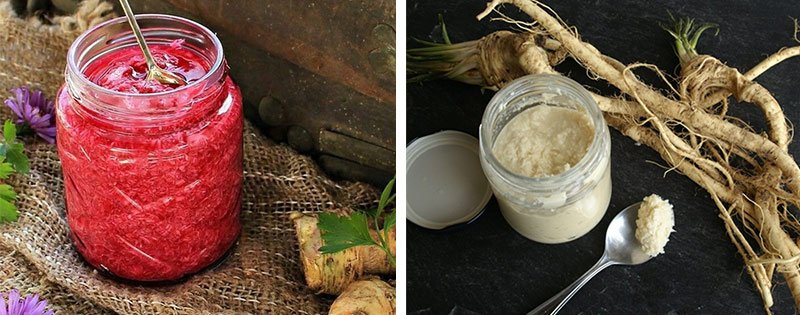 Harvesting horseradish in banks for the winter
Harvesting horseradish in banks for the winter
Option 1
To prepare rolled horseradish in jars, take: 250 ml of water, 1 tbsp. l. sugar and salt.
- peel and grind 1 kg of horseradish;
- boil water, add sugar and salt;
- add the grated roots, mix;
- place in jars with nylon lids.
The product is stored at a temperature not higher than +5 degrees, 1-2 months. Before serving, it should be diluted with sour cream in a 2: 1 ratio.
To preserve for a longer period, add 125 ml of apple cider vinegar to the base and only then the twisted horseradish itself. With this preparation, jars should be sterilized, filled and closed with tin lids.
With this preparation, the shelf life of the product reaches several years.
Option 2
To prepare a horseradish-based seasoning (horseradish) in a volume of 200 g, add: salt 1 tsp, sugar 1 tbsp, wine vinegar 7 tbsp, ground beets 1 pc.
- chop the roots (preferably juicy and thin);
- put the resulting liquid gruel in jars and place in the refrigerator.
The shelf life reaches 3-6 months.
Observe a power of 600-700 watts, otherwise the solid rhizomes will not be able to scroll. Protect eyes, nose, respiratory tract during processing.
Storage after processing
There is not always a suitable room to keep the horseradish fresh. In an ordinary apartment, you can make a stock from a recycled product.
Pickled horseradish
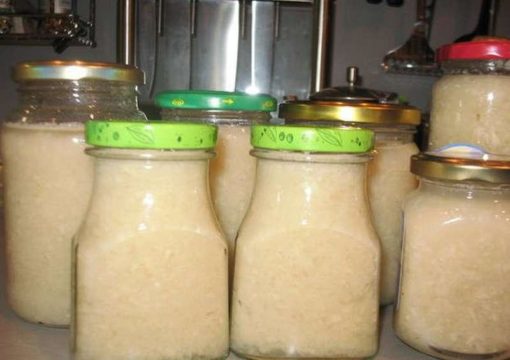 Canned horseradish can be stored for as long as possible - up to several years. To preserve the roots, it is advisable to dig out immediately before the procedure. The fruits can be soaked overnight in cold water - the raw material will be easier to grind. Before pickling, the roots must be thoroughly washed and cleaned. The skin should not be cut off, but scraped off with a knife. The peeled pulp must be grated on a fine grater or ground in a meat grinder.
Canned horseradish can be stored for as long as possible - up to several years. To preserve the roots, it is advisable to dig out immediately before the procedure. The fruits can be soaked overnight in cold water - the raw material will be easier to grind. Before pickling, the roots must be thoroughly washed and cleaned. The skin should not be cut off, but scraped off with a knife. The peeled pulp must be grated on a fine grater or ground in a meat grinder.
For 1 kg of crushed raw materials you will need:
- 250 ml of water;
- 1 tbsp. a spoonful of salt;
- 1 tbsp. a spoonful of sugar;
- 125 ml apple cider vinegar (6%) or 1 tbsp. a spoonful of citric acid.
Boil water, dissolve salt and sugar in it. After removing from heat, add vinegar or citric acid. Pour the solution into a container with grated horseradish, mix well. Fill a sterilized jar with the mixture under the neck
It is important that the jar has a minimum of space for air. Immediately after this, the jar is covered with a lid and rolled up.
Freezing
At negative temperatures, the nutritional quality of horseradish remains unchanged for 5-6 months.The thawed product does not lose its taste, aroma and juiciness. In addition, the method allows you to save raw materials that have damage, it is enough to cut off the affected areas, preserving the intact pulp.
Before freezing, the root crop must be washed and peeled, then cut into 3-5 cm cubes or grated. Blot the raw material with a paper towel to remove excess moisture, wrap it in a plastic bag and place it in the freezer.
Before use, it is advised to grate the cubes before they thaw. In this case, horseradish will not emit substances hazardous to the eyes and nose.
Drying
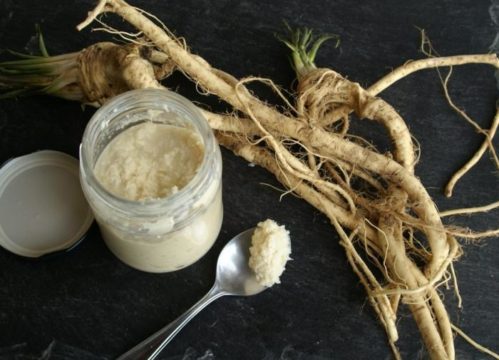 The blank can be used for 1-2 years. Dried horseradish roots retain a pleasant aroma, but partially lose their taste.
The blank can be used for 1-2 years. Dried horseradish roots retain a pleasant aroma, but partially lose their taste.
You can dry horseradish naturally, but the process will take a long time, so you should use the oven. After peeling the root vegetable and cutting it (in halves, slices, you can grate), you should put the raw materials on a baking sheet in one layer. You need to put in an oven already heated to + 60 ° C, keep at this temperature for about 40-60 minutes. After cooling, the horseradish plates can be crushed for ease of use - grate, grind in a mortar, grind in a coffee grinder.
Dried horseradish should be kept in containers made of natural materials, for example, in a linen bag. It is better to store the powder in a glass or ceramic container with a tight lid so that the aroma does not escape.
This blank is well suited as a seasoning for first courses and making sauces. Before use, the product must be soaked in water for an hour.
Pounded horseradish
You can also save horseradish in the form of a ready-made seasoning. In the refrigerator, horseradish sauce is edible for 2 months, although it will be most delicious for the first 2-3 weeks.
The washed and peeled horseradish root must be chopped in a meat grinder along with garlic, mixed with chopped tomato pulp and added salt, sugar, spices to the mixture. One part of horseradish requires 10 parts of tomatoes. The volumes of horseradish and garlic should be equal, but the proportion of garlic can be increased to increase the shelf life of the dish. On average, 2.5 kg of ready-made mixture requires 2 teaspoons of salt and 1 teaspoon of sugar.
The mass should be put in a sterilized jar; for longer storage, you can roll up the jar with sauce as a preservation.
The best horseradish harvesting recipes
Cooking horseradish at home will allow you to make a supply of hot seasoning for the winter. It is served with aspic, jellied meat, jelly, homemade sausages and other dishes.
Horseradish in Russian
For a long time, the preparation of horseradish according to the classic recipe was very popular. For horseradish in Russian we need:
Horseradish root (1 kg) is peeled and washed. Rub it on a fine grater or twist it in a meat grinder. Add salt (1 tablespoon), sugar (3 tablespoons), and boiling water (1 glass). The ingredients are quickly mixed, laid out in sterile jars. Add 2-3 drops of lemon juice from above to each jar. If the cans are sealed with canning lids, horseradish will be stored in the refrigerator for up to 3 months.
 The classic recipe for Russian horseradish
The classic recipe for Russian horseradish
This horseradish preparation is served both in pure form and diluted with sour cream in a 1 to 1 ratio. Serves as an ideal addition to boiled potatoes, jellied meat, aspic, meat dishes.
Horseradish with beets
Beetroot horseradish is popular - a well-known horseradish recipe, which even inexperienced housewives can easily cook at home. The seasoning turns out to be bright, stimulating the appetite.
 Horseradish with beetroot juice with homemade sausage
Horseradish with beetroot juice with homemade sausage
• Fresh horseradish root (10 pieces of medium size);
• Raw beets (1 pc.);
• Salt and sugar to taste;
• Wine or apple cider vinegar (5-6 tablespoons).
Horseradish and beets are chopped on a grater or in a meat grinder. Salt and sugar are added to taste, and at the very end - vinegar. If the seasoning is too thick, you can add cold boiled water to the desired consistency.The seasoning is mixed, laid out in jars, tightly closed with lids and placed in the refrigerator. "Evil" such a seasoning will remain for a month.
Advice
If you store horseradish with beets for a long time, there is no need to add vinegar.
Adjika Khrenoder (damn thing, gorloder)
Cooking horseradish at home, the recipe for which we will now tell you, is popular among lovers of hot-hot sauces.
 The process of making adjika Khrenoder
The process of making adjika Khrenoder
Prepare it like this:
• 1 kg of tomato is twisted in a meat grinder;
• Next, grind 300 g of horseradish root and garlic into a meat grinder or grater;
• Add 1 tbsp. l. salt and sugar and 2-3 tbsp. wine vinegar, or 1-2 tbsp. l. table vinegar 9%;
• Ready sauce is poured into sterile jars and tightly closed with lids.
Store in a cool place.
Recommendation
The proportions of the ingredients should be adjusted to your liking. For example, increase the amount of garlic or add more sugar.
Horseradish with apples and carrots
Lovers of a softer taste will like the recipe for making horseradish at home with carrots and sour apples. It is prepared as follows:
• 2 kg of carrots are grated on a fine grater;
• Also prepare 100 gr. garlic;
• 100 gr. apples (Antonovka, Semerenko) are cut into thin slices;
• Layers of apples, carrots, horseradish in a jar and fill with marinade.
 Delicious and healthy salad with horseradish, carrots, apples
Delicious and healthy salad with horseradish, carrots, apples
The marinade is prepared like this:
• Boil 1 liter of water with 3 tablespoons. sugar and 1 tbsp. salt. At the end, add 2 tbsp. vinegar 9%;
• Sterilize prepared jars with salad for 15-20 minutes and roll up.
Fresh and dried horseradish - which one is best to store?
In order to preserve the freshness of horseradish for the winter, select high-quality roots without damage, cutting off excess tops. We clean the rhizomes from the remnants of the earth and leave them to dry for 1-2 hours in the shade outside. Then we proceed to placing the prepared roots in a container for storage. A wooden or plastic box is ideal. We make sure that the first layer of sand is at least 7 cm. Rhizomes, laid alternately at a comfortable distance from each other, are sprinkled with a generous dry layer of sand. During storage, do not forget to slightly moisten the sand with water once a week, but do not overdo it, otherwise the rhizomes will begin to rot and mold.
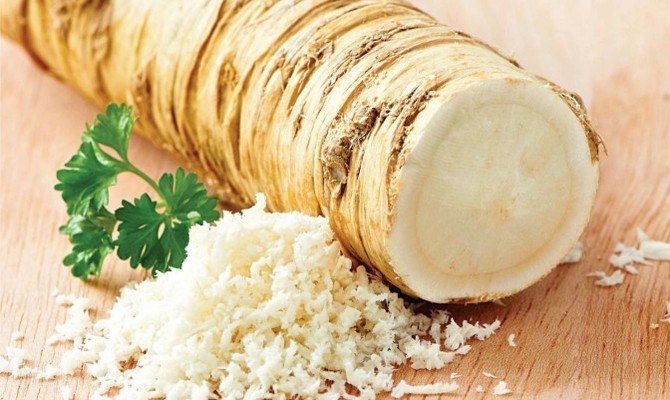
Grated horseradish
It is best to store fresh horseradish in a basement at a temperature of about freezing. If you live in an apartment, then the best option would be a glazed balcony without heating. In severe frosts, be sure to cover the box with horseradish with warm material. By following these simple rules, you will keep your roots fresh until next season. And if there is nowhere to put the container with the rhizomes, you can store the roots in a dried form. This is quite simple to do. You need to rinse the roots and send them to dry in a warm place with plenty of sunlight. When the roots are dry, grind them with a mortar into a powder.
A quicker recipe is dried horseradish in the oven. In this case, you will need to rinse the roots thoroughly in cool water, peel them and cut them into thin strips. We put the cubes laid out in an even layer on a baking sheet into the oven, preheated to 60 degrees, while keeping the oven door open all the time so that excess moisture from the roots evaporates faster. We are waiting for them to dry, usually 40 minutes is enough for this. Grind the slightly cooled roots in a mortar, and best of all in a blender. The resulting dry mixture must be stored in a glass or plastic container, covered with a lid on top.
You can use dried horseradish as an additive to pickles, sauces, first and second courses. In addition, horseradish powder is useful in small portions, soaking it in warm water. Within an hour you will have a swollen gruel, which can be seasoned to taste with vinegar or sour cream. The only drawback of this method is the partial loss of nutrients and vitamins during drying.

